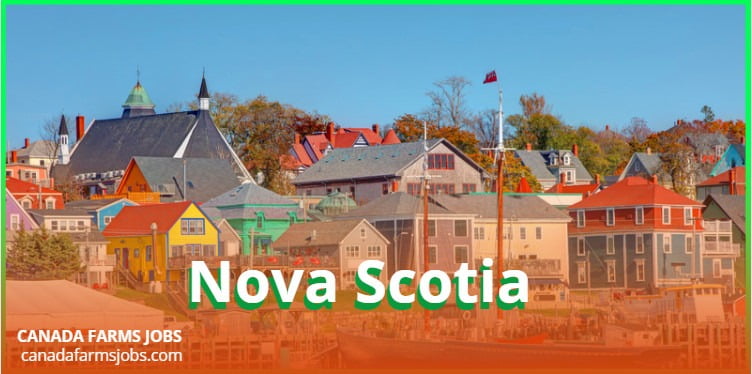Introduction
Nova Scotia, one of Canada’s Maritime provinces, is renowned for its stunning coastal scenery, rich history, and vibrant culture. The province, whose name means “New Scotland” in Latin, reflects its Scottish heritage and diverse cultural influences. With its capital city, Halifax, Nova Scotia is a blend of bustling urban centers and charming rural landscapes, offering a unique lifestyle and a variety of attractions.
Geography and Climate
Nova Scotia is located on the eastern coast of Canada and is almost entirely surrounded by the Atlantic Ocean. The province comprises the mainland and Cape Breton Island, along with numerous smaller islands. The coastline is dotted with picturesque lighthouses, sandy beaches, and rugged cliffs, making it a paradise for nature lovers and photographers.
The climate in Nova Scotia is influenced by the ocean, resulting in moderate temperatures compared to other Canadian provinces. Summers are generally warm and pleasant, with temperatures averaging around 20-25°C (68-77°F), while winters are milder but can still be quite cold, with temperatures often around -5 to 0°C (23-32°F). The province experiences a fair amount of rainfall and snowfall, contributing to its lush landscapes.
Major Cities
Halifax: The capital city and the largest urban center in Nova Scotia, Halifax is a vibrant and historic city known for its maritime heritage. The city’s bustling waterfront, with its historic buildings, museums, and seafood restaurants, is a major attraction. Halifax is also a cultural hub, home to numerous festivals, theaters, and art galleries. The city’s universities, including Dalhousie University and Saint Mary’s University, contribute to its lively and youthful atmosphere.
Sydney: Located on Cape Breton Island, Sydney is the second-largest city in Nova Scotia. It serves as a gateway to the scenic Cabot Trail, a popular tourist route renowned for its breathtaking coastal views. Sydney’s rich history and cultural diversity are reflected in its museums, music festivals, and community events.
Truro: Known as the “Hub of Nova Scotia” due to its central location, Truro is a small city with a big heart. It is a key agricultural and commercial center with a charming downtown area, beautiful parks, and a strong sense of community. The nearby Tidal Bore, a natural phenomenon caused by the Bay of Fundy’s extreme tides, is a unique attraction.
Economy and Industry
Nova Scotia’s economy is diverse, with key sectors including fisheries, agriculture, forestry, mining, and tourism. The province’s coastal location makes it a major center for the fishing industry, particularly for lobster, scallops, and other seafood. Agriculture is also important, with dairy farming, fruit orchards, and vineyards contributing to the economy.
The forestry and mining industries, particularly gypsum, salt, and coal mining, play significant roles in the province’s economy. Nova Scotia has also been developing its renewable energy sector, with a focus on wind and tidal energy.
Tourism is a vital part of Nova Scotia’s economy, attracting visitors with its natural beauty, historic sites, and cultural events. The province’s national parks, historic lighthouses, and the iconic Cabot Trail are major draws for tourists from around the world.
Culture and Heritage
Nova Scotia’s culture is a rich tapestry of Indigenous, Scottish, Acadian, and African Nova Scotian influences. The province celebrates its heritage through numerous festivals, music, dance, and culinary traditions. The Celtic heritage is particularly strong, with traditional music, dance, and Gaelic language still thriving in many communities.
The province is also home to significant Acadian and Mi’kmaq communities, each contributing to the cultural mosaic. The Fortress of Louisbourg, a reconstructed 18th-century French fortress, and the Glooscap Heritage Centre, dedicated to the Mi’kmaq culture, are notable cultural sites.
The arts scene in Nova Scotia is vibrant, with a strong emphasis on music, theater, and visual arts. The province hosts many festivals, such as the Halifax International Busker Festival, the Celtic Colours International Festival, and the Royal Nova Scotia International Tattoo, showcasing local and international talent.
Education and Research
Nova Scotia is home to several esteemed educational institutions, including Dalhousie University, Saint Mary’s University, and Acadia University. These institutions are known for their research contributions, particularly in fields such as marine biology, oceanography, and environmental sciences.
Natural Attractions and Outdoor Activities
Nova Scotia offers a wealth of outdoor activities, thanks to its diverse landscapes. The Cabot Trail, with its scenic vistas and hiking trails, is a must-visit for nature enthusiasts. Kejimkujik National Park, both inland and coastal, offers camping, canoeing, and opportunities to learn about Mi’kmaq heritage.
The province’s coastline provides excellent opportunities for water sports, including kayaking, sailing, and whale watching. The Bay of Fundy, famous for having the highest tides in the world, offers unique experiences such as tidal bore rafting and exploring fossil-rich cliffs.
Conclusion
Nova Scotia is a province that offers a unique blend of natural beauty, cultural richness, and economic diversity. Its welcoming communities, vibrant arts scene, and scenic landscapes make it an attractive place to live, work, and visit. Whether exploring the historic streets of Halifax, enjoying the coastal views of the Cabot Trail, or experiencing the province’s rich cultural heritage, Nova Scotia has something to offer everyone.




